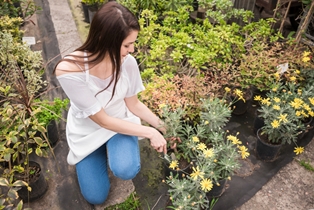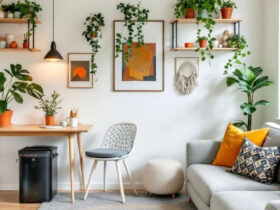Designing a landscape that is both aesthetically pleasing and functional is a multifaceted task. The choice of plants and materials plays a crucial role in shaping the overall look and feel of your outdoor space. A well-thought-out landscape not only enhances the beauty of your property but also adds value to it. This article delves into the detailed process of selecting the right plants and materials for your landscape, ensuring that your outdoor space thrives in harmony with its surroundings.
1. Understanding Your Landscape Environment
1.1 Assessing Climate and Soil Conditions
Before diving into plant selection, it is essential to understand the unique environmental conditions of your landscape. Climate and soil conditions are the two most critical factors that will dictate the success of your plant choices.
In colder climates, opting for hardy perennials and evergreens that can withstand freezing temperatures is crucial. Conversely, in warmer regions, plants that thrive in heat and resist drought should be prioritized. Additionally, understanding your soil’s pH level, drainage, and fertility will help you choose plants that are best suited for your garden.
1.2 Evaluating Sunlight Exposure
The amount of sunlight your landscape receives will also influence your plant selection. Areas that receive full sun for most of the day are ideal for sun-loving plants like roses, lavender, and sunflowers. On the other hand, shady areas might be better suited for shade-tolerant plants such as hostas, ferns, and astilbes. It’s important to map out the sunlight exposure in your garden to ensure that each plant is placed in its optimal growing condition.
2. Selecting the Right Plants
2.1 Choosing Native Plants
Incorporating native plants into your landscape is a sustainable choice that benefits both the environment and your garden’s health. Native plants are naturally adapted to your region’s climate and soil, making them easier to maintain and more resistant to pests and diseases. Additionally, they provide a habitat for local wildlife, promoting biodiversity in your garden.
2.2 Considering Plant Functionality
When selecting plants, consider their functionality within the landscape. Ornamental plants like flowering shrubs and trees add visual interest and color, while edible plants such as herbs, fruits, and vegetables provide sustenance. Ground covers, such as creeping thyme or clover, can help prevent soil erosion and reduce weed growth. It’s important to strike a balance between aesthetics and functionality to create a harmonious landscape.
2.3 Mixing Plant Textures and Colors
A well-designed landscape features a variety of plant textures and colors that create depth and visual interest. Combining plants with different leaf shapes, sizes, and colors can add contrast and make your garden more dynamic. For example, pairing the feathery foliage of ferns with the broad leaves of hostas creates a pleasing contrast. Similarly, choosing a color scheme—whether it’s monochromatic, complementary, or analogous—can unify the look of your garden.
3. Choosing the Right Materials
3.1 Selecting Hardscaping Materials
Hardscaping elements such as pathways, patios, and retaining walls are the backbone of your landscape design. When selecting materials for these structures, consider both aesthetics and durability. Natural stone, brick, and concrete are popular choices for pathways and patios due to their longevity and visual appeal. If you prefer a more rustic look, gravel or wood chips can be used for paths, while timber and boulders can be used to build retaining walls.
3.2 Incorporating Water Features
Water features such as fountains, ponds, and waterfalls add a sense of tranquility to any landscape. When choosing materials for these features, consider the overall style of your garden. Natural stone or slate works well for a naturalistic look, while stainless steel or ceramic is better suited for a contemporary design. Additionally, consider the maintenance requirements of each material; for instance, ceramic and stainless steel may require more frequent cleaning to maintain their appearance.
3.3 Using Sustainable Materials
Sustainability is a growing concern in landscape design. Opting for recycled or reclaimed materials not only reduces your environmental impact but also adds a unique, eco-friendly element to your garden. For example, reclaimed wood can be used to create garden benches or raised beds, while recycled concrete can be repurposed as stepping stones or a patio base. Additionally, using permeable paving materials such as gravel, permeable concrete, or grass pavers can help manage stormwater runoff and reduce erosion.
4. Designing for Longevity and Maintenance
4.1 Planning for Growth
When designing your landscape, it’s important to consider the mature size of plants. Trees and shrubs will grow over time, and what starts as a small sapling can eventually dominate a space if not properly planned. Ensure that there is enough room for each plant to grow to its full potential without overcrowding or overshadowing other plants. This foresight will save you time and effort in the long run, as you won’t need to constantly trim or relocate plants that have outgrown their space.
4.2 Simplifying Maintenance
A beautiful landscape should also be easy to maintain. Choosing low-maintenance plants that require minimal watering, pruning, and fertilizing can significantly reduce the time and effort needed to keep your garden looking its best. Additionally, incorporating mulch into your garden beds helps retain soil moisture, suppress weeds, and improve soil health. When it comes to hardscaping, selecting materials that are easy to clean and resist weathering, such as sealed stone or concrete, will also reduce the maintenance required.
4.3 Implementing Smart Irrigation
Efficient irrigation is key to maintaining a healthy landscape. Drip irrigation systems and soaker hoses are excellent choices for watering plants at the root level, minimizing water waste and ensuring that moisture reaches where it’s needed most. Additionally, installing a smart irrigation controller that adjusts watering schedules based on weather conditions can help you conserve water and maintain a lush garden without overwatering.
Conclusion
Choosing the right plants and materials for your landscape is a thoughtful process that requires careful consideration of your environment, design preferences, and maintenance capabilities. By understanding your landscape’s unique characteristics and selecting plants and materials that complement them, you can create an outdoor space that is both beautiful and functional for years to come.





Find Us on Socials